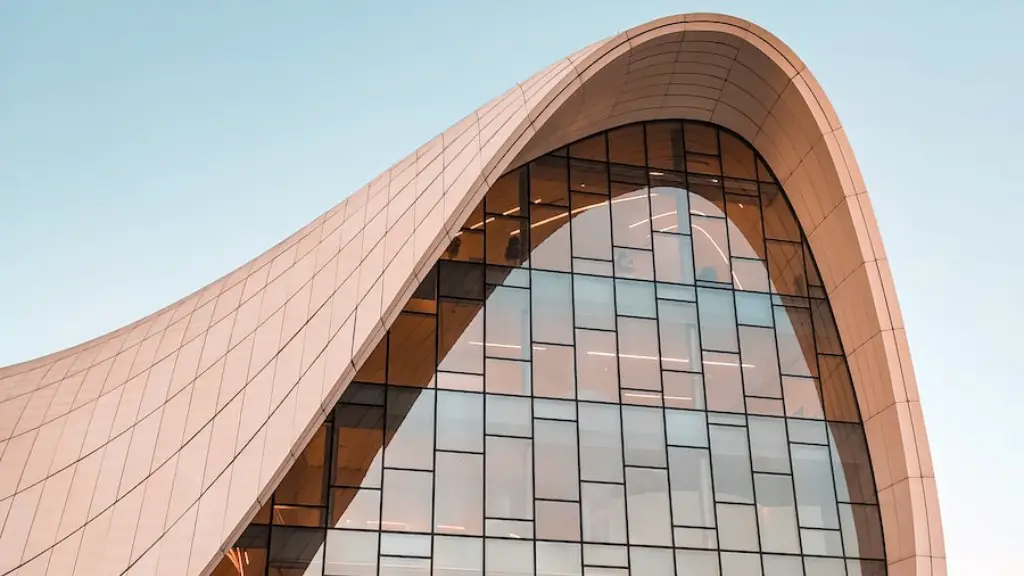In recent years, there has been an increased focus on developing green architecture. Green architecture is a type of architecture that focuses on eco-friendly design. There are many benefits to using green architecture, including reducing the negative impact on the environment. By using green architecture, we can help to preserve our natural resources and create a more sustainable future.
Green architecture, also known as sustainable design or eco-friendly architecture, is the practice of creating buildings and using materials that are environmentally responsible and resource-efficient throughout a building’s life-cycle: from siting to design, construction, operation, maintenance, renovation, and demolition.
How does architecture benefit the environment?
Sustainable architecture is not only energy-efficient and healthier for its inhabitants, but it also benefits the planet By reducing our reliance on non-renewable resources (fossil fuels such as coal and oil), green architecture can actually promote and maintain a cleaner environment. In addition, sustainable architecture often makes use of recycled materials, which further reduces our impact on the planet.
As we become more aware of the need to protect our environment, green buildings are becoming more popular. Green buildings are designed to be more sustainable and efficient, using less energy, water and other resources. They also often incorporate features to improve indoor air quality and promote health and well-being.
While the tangible benefits of green buildings may not be immediately obvious, they can have a significant impact on our environment. By reducing carbon emissions, energy and waste, and conserving water, green buildings are playing a vital role in protecting our planet.
How does green design contribute to sustainability
There are a number of ways to reduce the environmental impact of a building, through material and resource conservation, increased efficiency of heating and cooling systems, and reduced operating and utility costs. One way to achieve this is to increase daylight access, which can reduce the need for artificial lighting and heat.
Efficient city planning and designing is essential to create good and healthy living conditions for all city occupants. Good planning of the city transport system is one of the most important ways through which architects can reduce pollution levels during the early stages of city planning.
Is Green Architecture really sustainable?
Green buildings help reduce the effects of climate change and create a “win-win” situation for construction firms and building owners. By choosing to become environmentally responsible, firms and owners can reap certain economic benefits. In addition to saving money on energy and water costs, green buildings can also generate income through the sale of carbon credits.
Sustainable buildings are necessary as they help reduce pollution and improve a person’s overall health. They also help conserve resources like water and energy.
What are the pros and cons of green building?
Green buildings are more expensive to construct than traditional buildings because they use more efficient and renewable materials. However, these materials are recyclable, reusable, and nontoxic, making green buildings a more sustainable option in the long run.
Green spaces are an important part of any city or town. They improve air quality, reduce noise, and enhance biodiversity. They also moderate temperatures during hot periods and provide cool and shaded areas during hot weather.
How does green architecture improve economy
lower operating costs are often associated with green buildings and eco-friendly practices. When these practices are incorporated into the construction process, it can lead to lower energy bills for the building. This is due to the fact that green buildings are designed to be as energy efficient as possible.
A building can reduce demand for conventional energy by generating its own via solar or wind energy. By installing solar technology on the walls and roof, a building could utilize solar air heating, water heating and electricity. Similarly, wind turbines can help your company reduce pollution and save money.
How can architecture reduce climate change?
It is important to generate big ideas and reject the status quo in order to create new standards for design and architecture. These new standards will be easier to replicate and will eventually become the new normal for the built environment. This will result in less damage to the natural world.
The sector is accountable for about 50% of the greenhouse emissions in the country due to construction as well as the energy needed to keep buildings operational.
Do green buildings reduce air pollution
Improved air quality is always a good thing! A 20% increase in green roofs and walls in downtown Toronto could help to remove harmful pollutants from the air, and save money at the same time.
According to the United States Green Building Council, green building can reduce energy use by an average of 30 percent, carbon emissions by 35 percent, and generate cost savings of 50 to 90 percent. More information on green building and its benefits can be found on the USGBC website.
What problem do green architects try to solve?
The Green Architect is a great article that highlights the Catch-22 of green technology. On one hand, the more we replace old, inefficient technology with newer, more green models, the better off we’ll be for the environment. However, this accelerating pace of replacement also means that we’re using up more and more resources, and creating more waste in the process. It’s a real balancing act, and it’s one that we need to be conscious of if we’re going to make sustainable progress.
Green building is a term used to describe a building or structure that is environmentally friendly and sustainable. Green buildings not only decrease water waste, but may also contribute to enrich water reserves, preserves natural resources, defends biodiversity and enhances air and water quality. Green building also reduces your carbon footprint by producing less waste and decreasing the amount of toxic gases set free into the air.
Conclusion
It is estimated that buildings account for 39% of all carbon dioxide emissions in the United States, making them a major contributor to climate change. One of the ways to reduce these emissions is to design and build more energy-efficient buildings, known as green buildings.
Green buildings are designed to use less energy and water, and to generate less waste. They often incorporate features such as energy-efficient lighting and appliances, solar panels, and green roofs. These features not only help to reduce the environmental impact of buildings, but can also save money on utility bills and make buildings more comfortable to live and work in.
Green architecture helps the environment by using sustainable building materials, promoting energy efficiency, and creating a healthier indoor air quality.





